Celebrating 15 Years of ‘Bowling for Rhinos’ Indonesia Trips
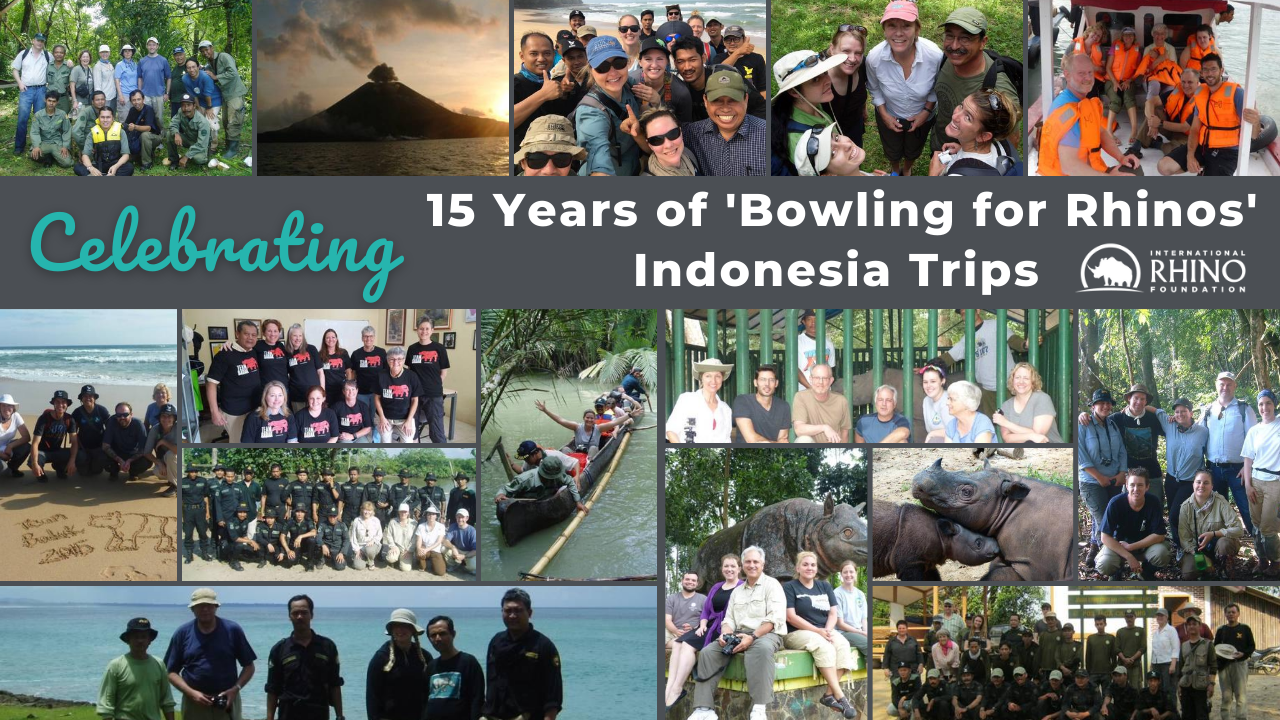

Like all of you, IRF and the larger rhino conservation community has had to make some adjustments to our plans this year. In addition to program operations, we’ve obviously had to postpone any travel to field sites, visits to partners, international conferences, and one of the highlights of our year, the Bowling for Rhinos trip.
Bowling for Rhinos (BFR) is a fundraising and awareness initiative started by the American Association of Zookeepers (AAZK) 30 years ago. AAZK chapters all across the US & Canada host an annual BFR event to raise money for rhino conservation and to-date have raised over $8 million benefiting rhinos and their habitats throughout Asia and Africa. In 1997, IRF became a joint recipient of these BFR funds and the money raised from these events cover a substantial amount of our program costs in Indonesia, protecting Javan and Sumatran rhinos in three national parks.
Putting on these events is no easy task and is done all on a volunteer-basis. To thank them for their efforts, we began hosting trips to Indonesia so that a select number of AAZK members could see first-hand where their money was going and the impact it was making on the conservation of these species. AAZK selects winners at the end of each year to go on a trip the following year. Once they get to Indonesia, winners are affectionately known as “the Bowlers.”
This year, trip winners were Lauren Ayers-Martinez from San Diego Zoo and Pamela Robie from Jacksonville Zoo! We started planning our two-week journey early in the year, but it quickly became apparent that we would need to postpone this trip as well. This year is the 15th anniversary of our “Bowlers” trips and while we’re disappointed that we don’t get to celebrate in Indonesia this year, we are greatly looking forward to continuing this tradition as soon as we can.
For now, we are celebrating with a diary-style lookback on the 15 years of the Bowling for Rhinos Indonesia Trip, written by Sectionov Inov, our Indonesia Coordinator who has served as the organizer and co-host for almost every BFR trip. A big congratulations and thank you to all of AAZK for your continued dedication to rhino conservation.
2005
The very first Bowlers’ group visited Indonesia in 2005; they were Mike Connolly from the Tulsa Zoo and Bethany Lutz from Utah’s Hogle Zoo. Dr. Nico van Strien and I accompanied them to each location. We visited the Sumatran Rhino Sanctuary (SRS) in Way Kambas National Park, Bukit Barisan Selatan National Park (BBS) and Ujung Kulon National Park (UKNP).
One of our colleagues, Gert Polet from WWF Netherlands, accompanied us for three days during the group exploration of UKNP, home to the last population of Javan rhinos. We met with Mr. Awriya Ibrahim, the Director of UKNP, and then we visited the Rhino Protection Unit (RPU) camp, hiked, and participated in a short patrol with the RPUs.
The RPUs consist of 4 people in each group that patrol 15-20 days per month with the other 10-15 days allocated for reporting and rest. Each group is comprised of a unit head, or forest guard, and three members from the community recruited through special selection and training. Each RPU is a unique collaboration, combining government and community in securing and patrolling the national park area.
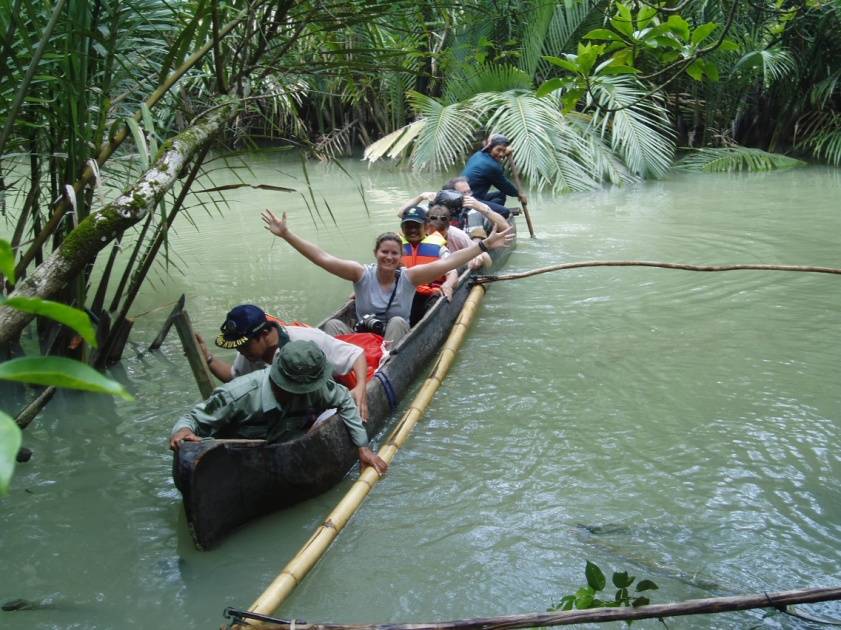
One of the highlights of our first Bowling for Rhinos trip was canoeing the Cigenter river. I know the Bowlers enjoyed that part. I have a favourite quote from a National Geographic photographer about this river. He describes that “Paddling the Cigenter River was an unbelievably fantastic experience. It’s remarkably peaceful and lovely here, yet full of primeval, Jurassic Park stuff—rain forest and trees that have fallen into the river. The rich colors of the place are so beautiful, and the strong tropical sun creates great pools of mottled light on the river’s surface.” It really is an other- worldly experience.
It was a great first year. I’m not sure we knew we’d be doing these trips every year at that point, but we all had a lot of fun, so I’m surprised it’s worked out that way.
2006
In 2006, Alex Vasquez (Dallas Zoo) and Jessica Scallan (Tulsa Zoo) were the Bowlers that visited Indonesia. As in 2005, Dr. Nico and I led the tour and we started with the SRS before moving onto BBS, and UKNP. The SRS is a 100 hectare (250 acre) conservation breeding facility within Way Kambas National Park. It was built in 1996 to provide a natural environment to protect and propagate Sumatran rhinos. The SRS is an important source of information about Sumatran rhinos and will help Indonesia strengthen its rhino population.

That year, when we visited Ujung Kulon, we got into big trouble with the weather when we were hit by a western monsoon while on the boat to the park. Usually a 5 hours voyage, we were trapped on the boat overnight before finally landing on the Peucang Island for one day and then it was back to Jakarta. We realized during that trip we really should create a more formal agenda, since we didn’t have one! We determined that June-August is a much better time to visit Ujung Kulon NP.
2007
In 2007, we re-organized the Bowling for Rhinos trip and created an agenda with much more detail. This was the first year for Dr. Susie Ellis as the new Director of the International Rhino Foundation. This year and almost every year since, Dr. Ellis has led the trip and made the itinerary for each BFR trip to Indonesia. The Bowlers now come in June -which is good because it’s dry season. The participants of Bowling for Rhinos in 2007 were Dr. Susie Ellis, Cathy Dean (Executive Director of Save The Rhino International), Jane Larson (Utah’s Hogle Zoo), Eric Flossic (Tulsa Zoo), Tom Kenyon-Slaney (Save The Rhino partners) and myself. Joining us at UKNP were Mr. Effendy A Sumardja (acting Director of YABI at the time), Mr. Waladi Isnan and Arief Rubianto (RPU managers), and Marcellus Adi (SRS manager).

The trip went well. It started with a visit with the RPUs at Way Kambas National Park. This park is situated in South-east Sumatra and is one of the last protected localities where habitats such as lowland rain forest, freshwater non-peat swamp and mangrove swamp can be found. It is one of the final refuges in Southern Sumatra for many rare and exciting animals, such as the Asian elephant, Sumatran rhino, Sumatran tiger, Clouded leopard and the White winged wood duck. Way Kambas is 1,300 km2 in extent and the park was originally established as a wildlife reserve in 1937. It was gazetted as a national park in 1989 and is regarded as one of Indonesia’s flagship reserves and final declaration was in 1997. In 1997 it was declared as a national park.
We then continued onto the SRS and later to BBS. The last location to visit was UKNP on Java Island. The participants had the chance to stay overnight with a RPU in the field and share experiences with each other. We stayed at “flying camp” with them to get a sense of how the RPUs spend their time in the field. All in all, it was an amazing experience for everyone. The Bowlers were able to really connect with the people working in the field.
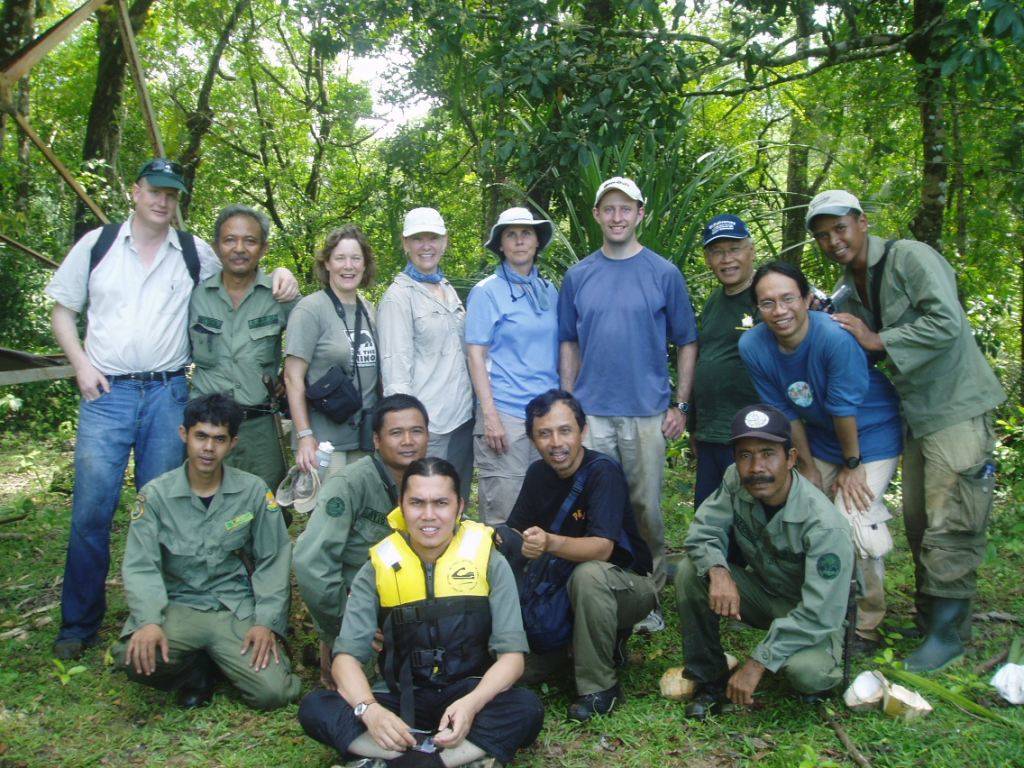
2008
In 2008, we had more participants than in previous years. They included: Dr. Susie Ellis, Kerry Crosbie (Director Asian Rhino Project), Mark Sainsbury (Save the Rhino International Trustee), Nat Sullivan (Auckland Zoo), Peter Hall (IRF Board Director), Robin Radcliffe (IRF), Bibhab Talukdar (IRF Asia Coordinator), Laura Sharon Smith (England), Rana Bayrakci (Woodland Park Zoo, Seattle), Heather Strawn (Cleveland Zoo), Waladi (YABI), and me.
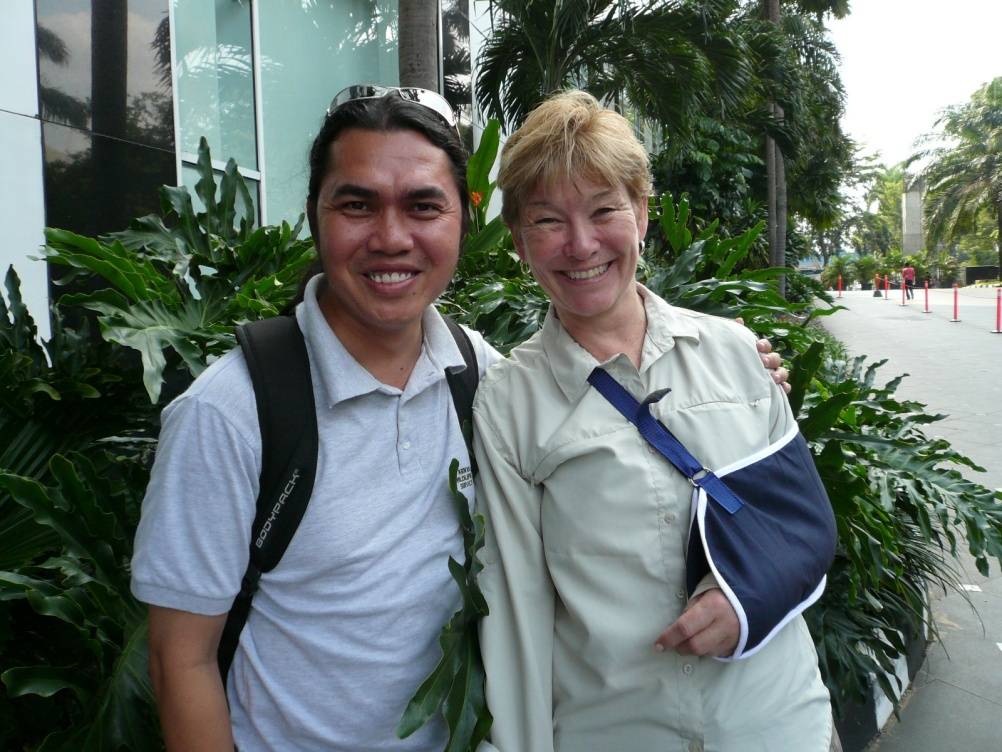
The Bowlers again visited all three parks. They hiked in each hot, humid jungle and travelled by boat along two rivers. 2008 was a year of minor accidents. Many Bowlers fell over in the swampy forest in Way Kambas. We lost at least one camera to the water. Our very own Dr. Susie Ellis took the prize when she slipped at the SRS and broke her wrist. She required immediate surgery and was rushed back to the USA halfway through the trip. We all missed her, but I was able to lead the trip after she left.
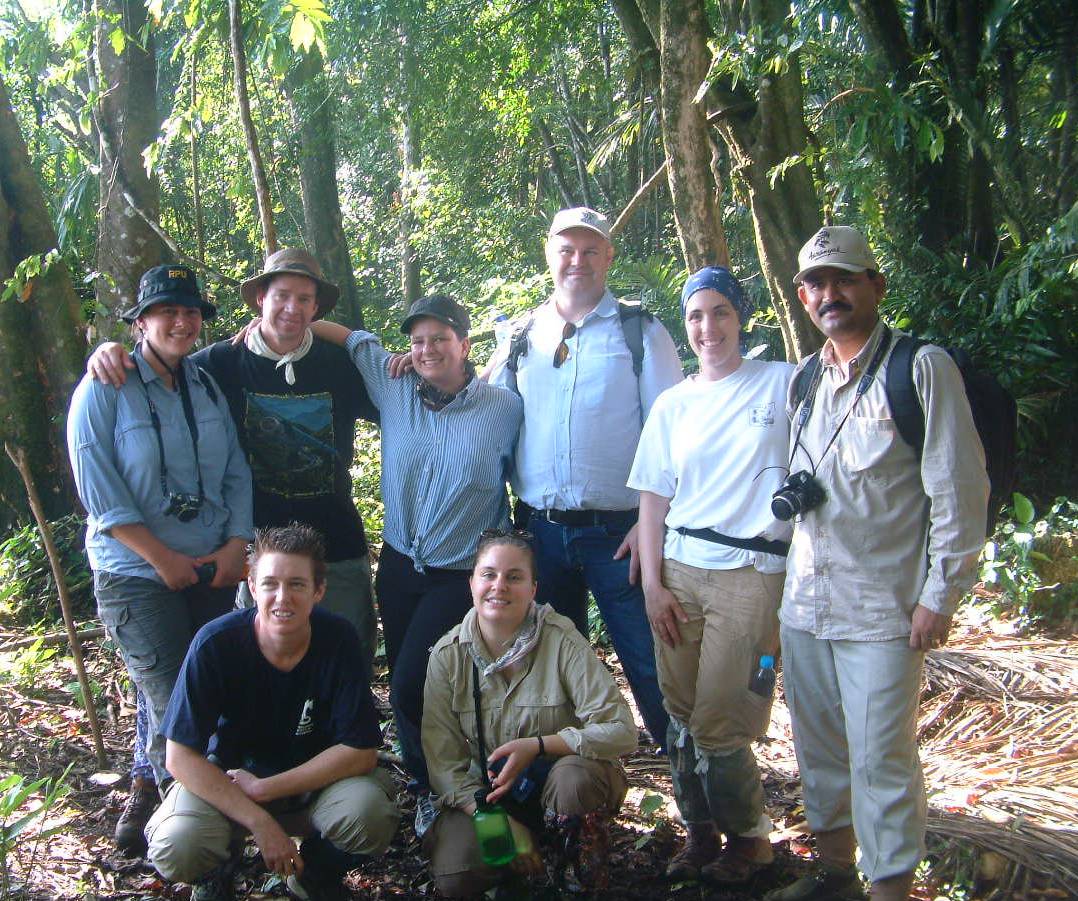
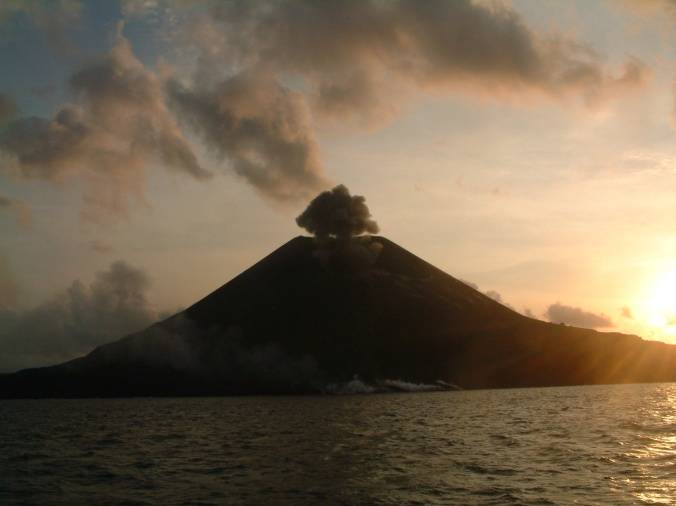
Bibhab Talukdar joined us once we arrived at Ujung Kulon. Before heading back to Jakarta, we had the chance to visit Krakatoa. Krakatoa, or Krakatau, is a volcanic island situated in the Sunda Strait between the islands of Java and Sumatra in the Indonesian province of Lampung. The name is also used for the surrounding island group comprising the remnants of a much larger island of three volcanic peaks which was obliterated in a cataclysmic 1883 eruption, unleashing huge tsunamis (killing more than 36,000 people) and destroying over two-thirds of the island. According to Wikipedia, the explosion is considered to be the loudest sound ever heard in modern history, with reports of it being heard up to 3,000 miles (4,800 km) from its point of origin. The shock waves from the explosion were recorded on barographs worldwide. We were all very excited to visit Krakatoa. It was a bit scary because the volcano experiences minor eruptions everyday and we were quite close to it.
2009
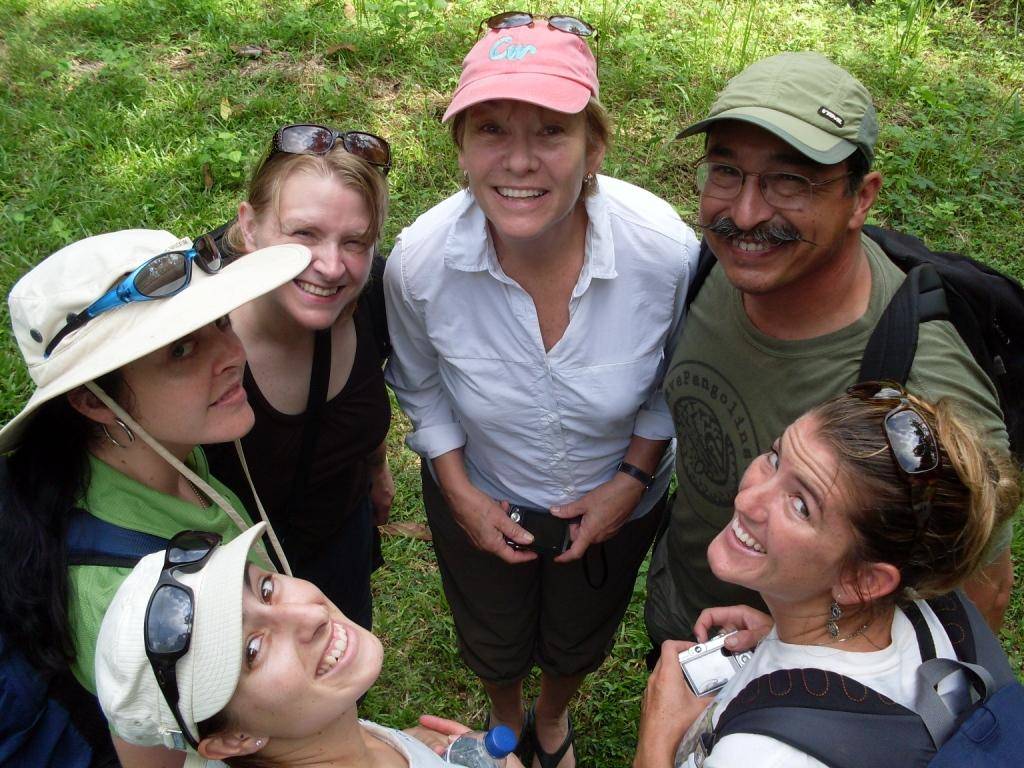
I was very happy that Dr. Susie was back to lead the trip in 2009. The agenda for the trip was almost the same as in 2008, except that we were unable to visit Krakatoa since it is now forbidden to visit for safety reasons. The participants were Kim Sevier (Tulsa Zoo), Rue Hewett (Miami Metrozoo), Jennifer Thomas (Detroit Zoo), Bob Cisneros (San Diego Zoo), Sophie Laurandos (Asian Rhino Project), and me. In addition, Dr. Widodo Ramono, the then new Director of YABI, accompanied us on the trip.
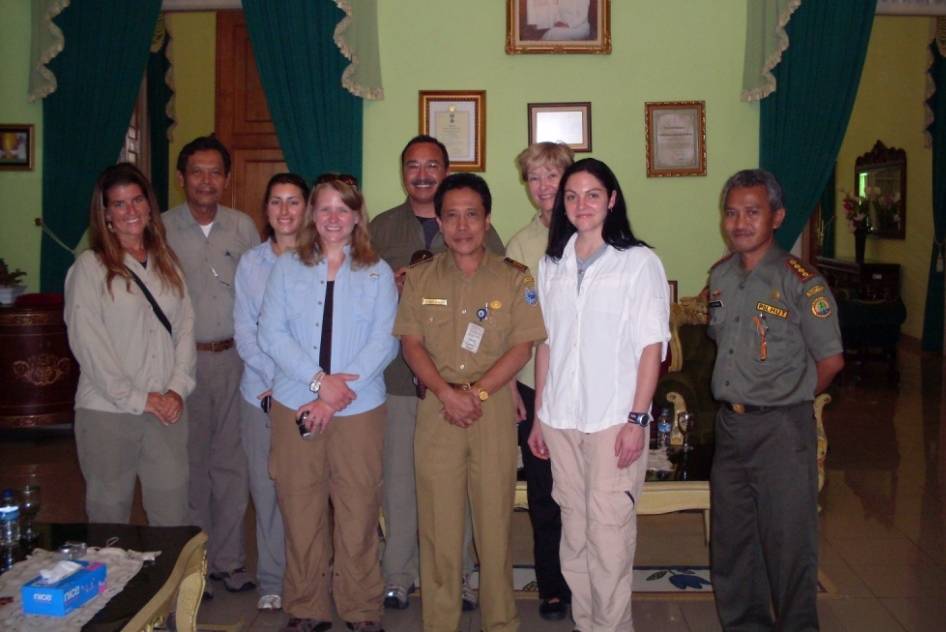
The agenda this year was a bit different. We started with a visit to Ujung Kulon, then continued to BBS and ended in Way Kambas including a visit to the SRS. All of the participants were also able to meet with the Head of the District (Mayor) of Pandeglang. It was a great meeting and we really engaged the mayor in rhino conservation and demonstrated that people from far away are concerned with and interested in helping the Indonesian government protect rhinos.
In Ujung Kulon NP, we stayed on Handeleum and Peucang Island. We went trekking with the RPUs, canoeing, and snorkelling. We had a very good time canoeing the Cigenter river, which was peaceful.
2009 was also the year we started a new tradition with the Bowlers at BBS, “Camp 50”. That year, and every year since, the Bowlers are given the honor of planting a tree in what has been dubbed “Bowler’s Alley”. Each Bowler plants a tree by hand, with the assistance of an RPU team member. The trees are fast growing and any returning Bowler will be surprised at how fast their tree has grown and how tall it is. You can see below how much Bob’s tree grew between 2009 and when he came back for a visit in 2014.
The group ended their trip at Way Kambas National Park, one of the major habitats for Sumatran rhino, and a high priority habitat for other threatened megafauna, including the Sumatran tiger and Sumatran elephant.
2012
September 2012, before The 4th International Congress on Zoo Keeping in Singapore, Dr. Susie brought several zookeepers to visit Indonesia. Even though it was not an official Bowling for Rhinos, I think we can call them Bowlers. I was very happy to help with the trip again and know that the people in the field were even happier because they love the Bowlers.
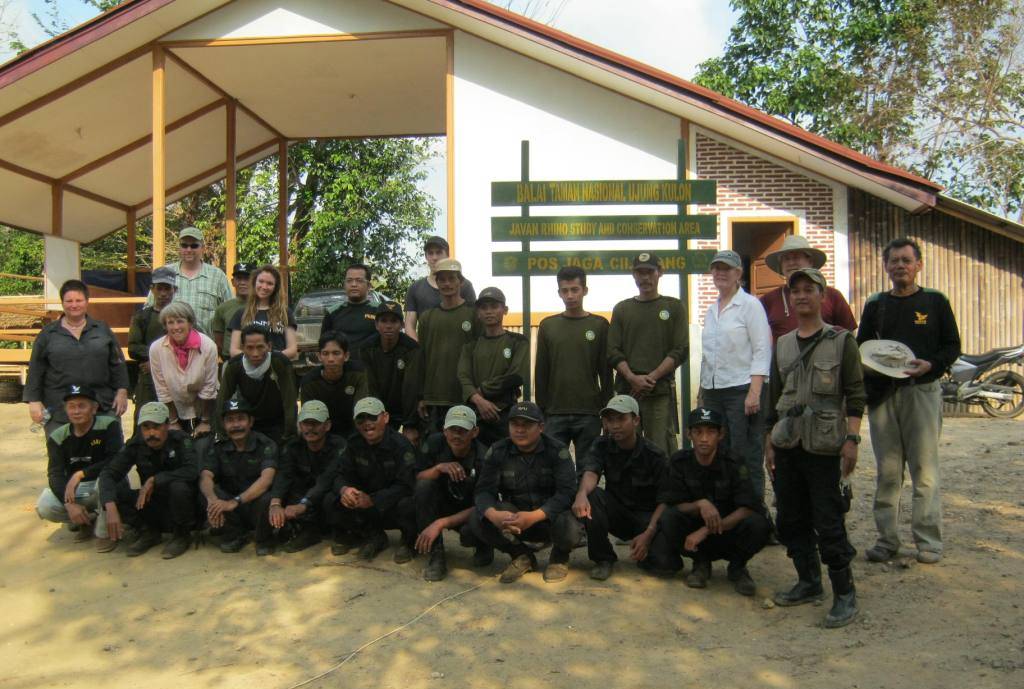
The participants included Elizabeth Stratton (Virginia, USA), Marissa Parrott (Victoria Zoo, Australia), Geoffrey Kidd (Taronga Zoo, Australia), Liam Shepheard (Howletts Wild Animal Park, England), Jim Haigwood (Los Angeles Zoo, USA), and Karen Simpson (Auckland Zoo, New Zealand). As usual, Dr. Susie and I led the trip to visit each rhino habitat in Indonesia. Widodo Ramono, Executive Director of YABI met the group in Ujung Kulon NP.
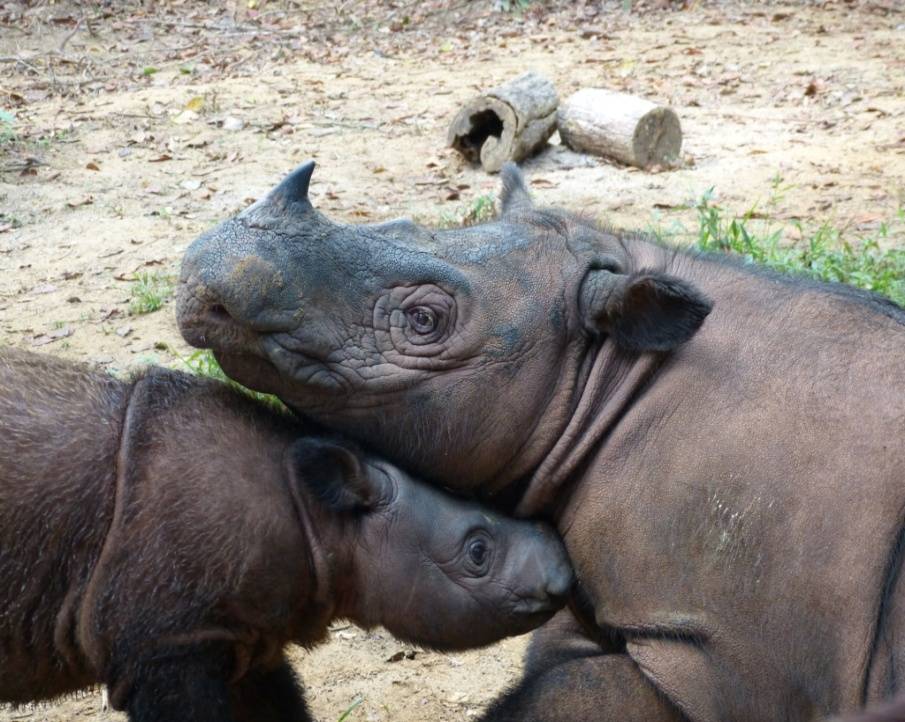
We used a very similar agenda for this trip as we did in 2008. I can say that the 2012 Bowlers were very lucky because they got to visit the new baby Sumatran rhino, Andatu. Andatu’s name is a combination of his parents’ names and a shortened version of the Indonesian expression for “gift from god.” Andatu is the first Sumatran rhino baby born in captivity in Asia in 124 year. The Bowlers were so excited and took a lot of pictures. Andatu was so cute and still running everywhere, almost like a puppy in my point of view. In addition, we saw how Ratu (Andatu’s mother) was very calm and patient in taking care of her son.
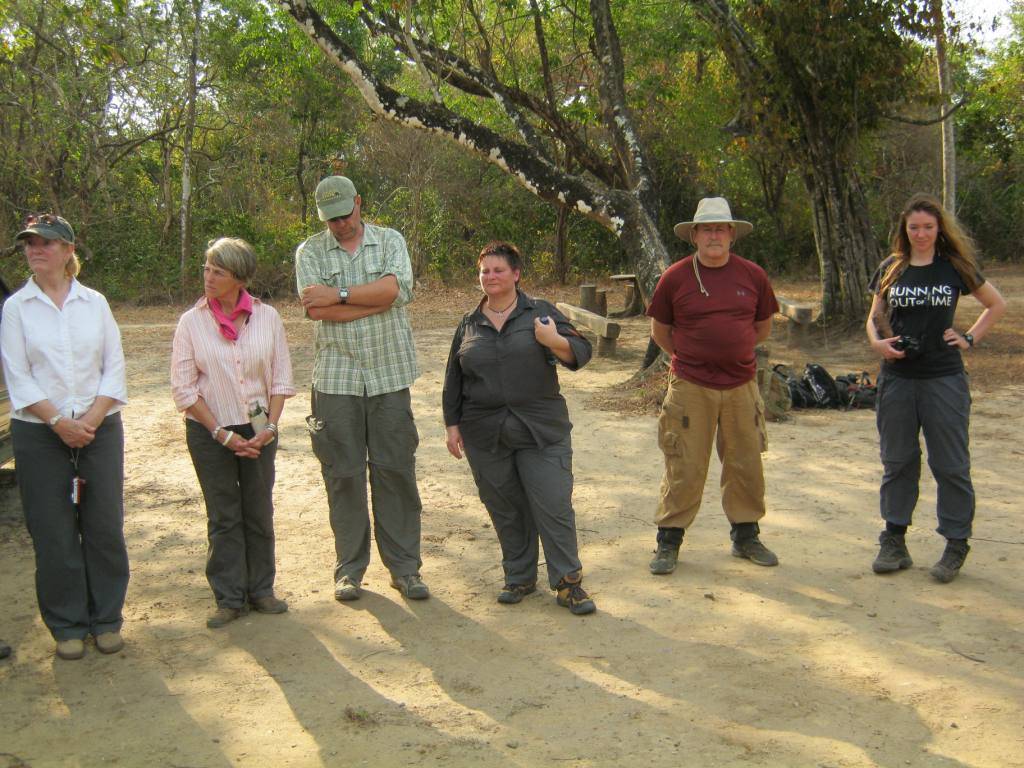
Next we went to BBS National park and finished the trip in Ujung Kulon NP. As usual, we visited the RPU camp and canoed in the Cigenter river. We had a bit of extra time in UKNP and were able to visit the JRSCA (Javan Rhino Study Conservation Area). JRSCA was created through the efforts of IRF, YABI and the national park to create 4,000 hectares of new suitable habitat for Javan rhino. In that area, we continue to construct small bridges, install electric fencing and lay a patrol road; eradicate invasive species, plant rhino food plants, provide a water supply and saltlicks, and construct additional guard posts. Eventually, the JRSCA will serve as a ‘staging ground’ from which translocations to a second site could occur.
2013
2013 was again an official Bowling for Rhinos trip. The participants included Gil Charles Myers (Smithsonian Zoo), Logan Tyler Agan (Oklahoma Zoo), Jennifer Lynn Ludwig, Lynn K Blattman, Gary Phillip Blattman (Cincinnati Zoo), and Rhishja Cota Larson (Annamiticus). Bill Konstant (IRF Program Officer) and I led the trip.
We started our trip in Way Kambas with visits to the RPU camp and the SRS. The highlight of the trip was spending time with the RPUs. The RPU at Way Kambas gave a presentation about their progress and took us on a boat trip and trek. These uniformed men are the front lines of rhino conservation, believing so strongly in the preservation of the rhino that they put their lives on the line to provide rhinos the protection necessary to eradicate poaching.
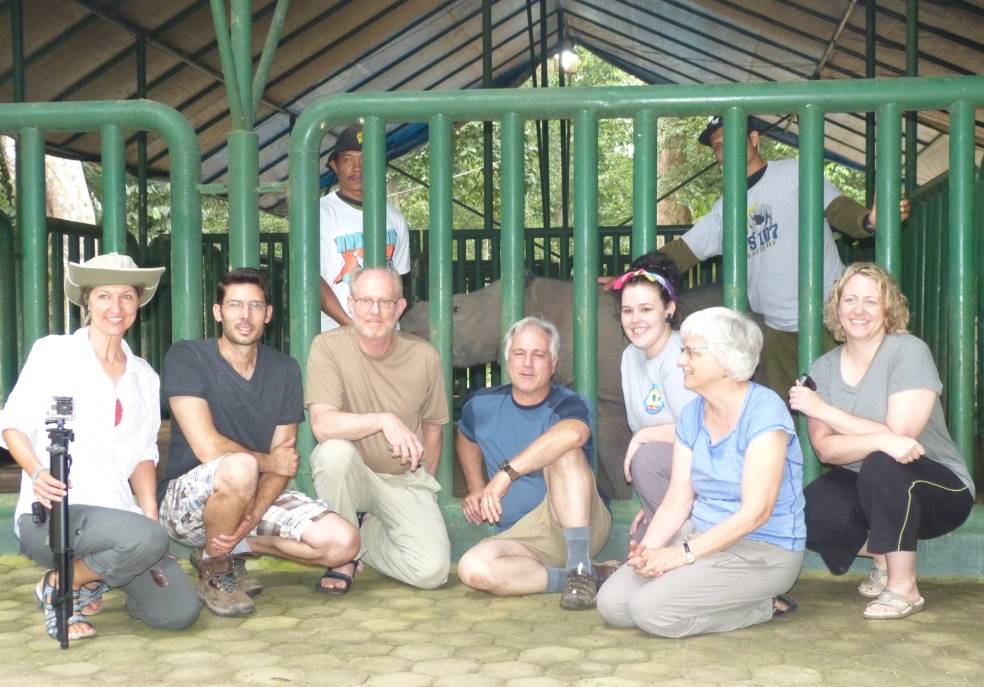
2013 Bowlers at the SRS. 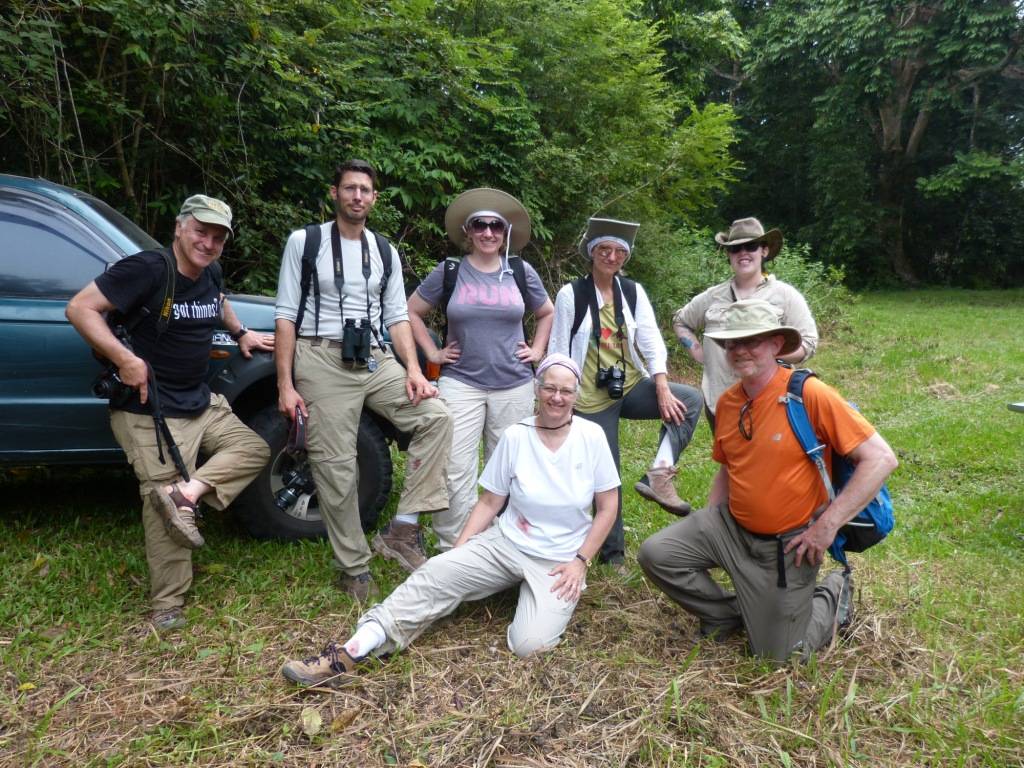
After a jungle trek in Way Kambas NP.
We then continued on to BBS national park. We met another RPU in BBS and had a great discussion. We also had the chance to meet the Deputy Director of BBS, Mr. S. Johny. He informed us that BBS still has a lot of problems like illegal hunting and encroachment. BBS has a road bisecting it that makes management difficult since it provides an easy access point for illegal activity. It also interrupts crucial rhino, elephant and tiger habitat – resulting in behaviour changes.
BBS is the third largest protected area (356,799 ha) in Sumatra and lies in the extreme southwest of Sumatra spanning two provinces, Lampung and Bengkulu (O’Brien and Kinnaird 1996, Sunarto 2000). Approximately 70% of the park is administered by the Lampung Barat district and Tanggamus district. The park was established in 1934 as a nature reserve by the government of Dutch East-Indies and upgraded to the status of national park in 1982. Habitats within the park range from beach forest to upper montane forest.
After these great visits, we moved to Java Island where we spent a night in Jakarta for a bit of relaxation, shopping and a visit to Indonesia’s national museum.
Our last stop was Ujung Kulon NP. We visited the JRSCA and got an explanation of the area from Pak Widodo. We said goodbye to Pak Widodo and finished our trip with a stop on Handeleum Island where we stayed overnight and enjoyed trekking and canoeing with the RPU.
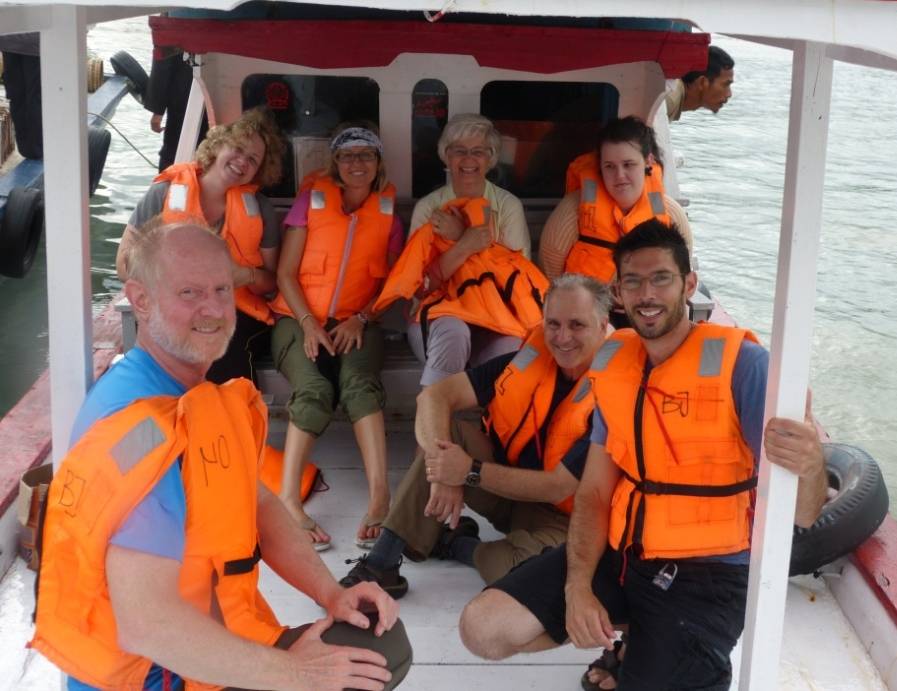
2014
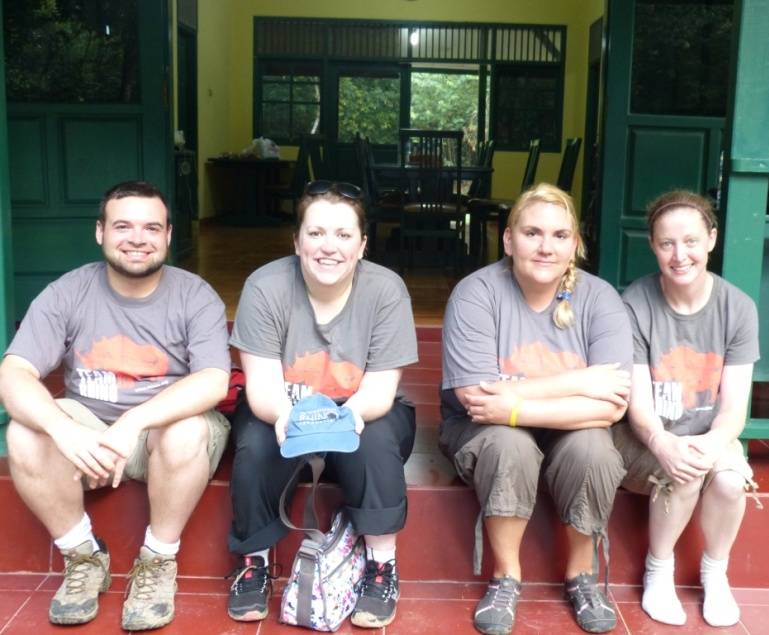
This year, the participants were Crystal Butler (Oklahoma City Zoo), Pace Frank (Oklahoma City Zoo), Kenton Kerr (Smithsonian’s National Zoo), Kristen Hetherington (Meryland) and Bill Konstant (Program officer IRF) and I again led this trip.
We visited with the RPUs in all three parks and had a great time introducing the zookeepers to the wonderful rhino habitats in Indonesia. This trip was a bit shorter than previous BFR trips, but we still had a great time.
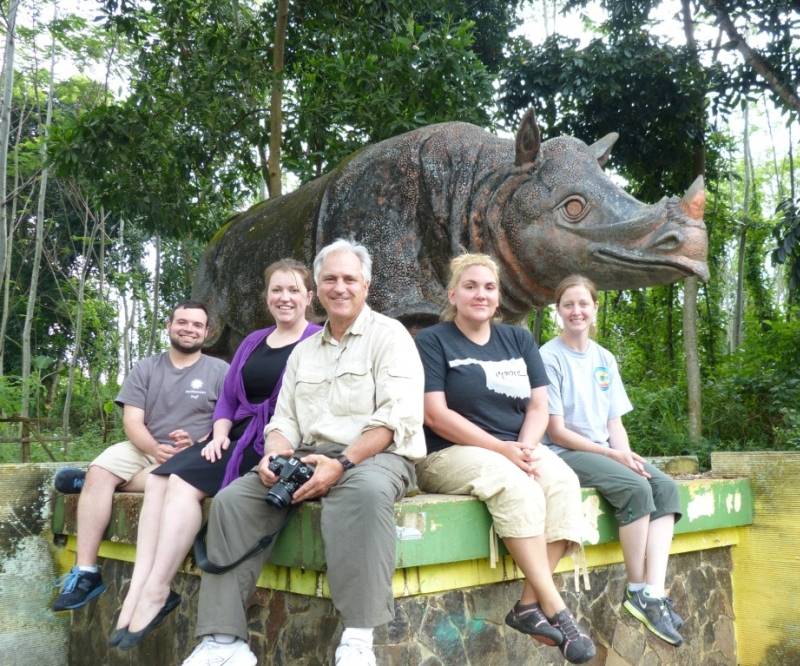
2015
Bowling for Rhinos continued in 2015! Participants included Robbie Clark (San Diego Zoo), Marisa Elizalde (Chicago Zoo), Chad and Jill Harmon (The Horns and Heroes Project), Teresa Randall (Oklahoma City Zoo) and Tamara Lookabaugh (Oklahoma City).
Dr. Susie was back in full force for this trip. I was very happy to have her back to lead. After a late-night arrival in Jakarta, we were off to Sumatra!
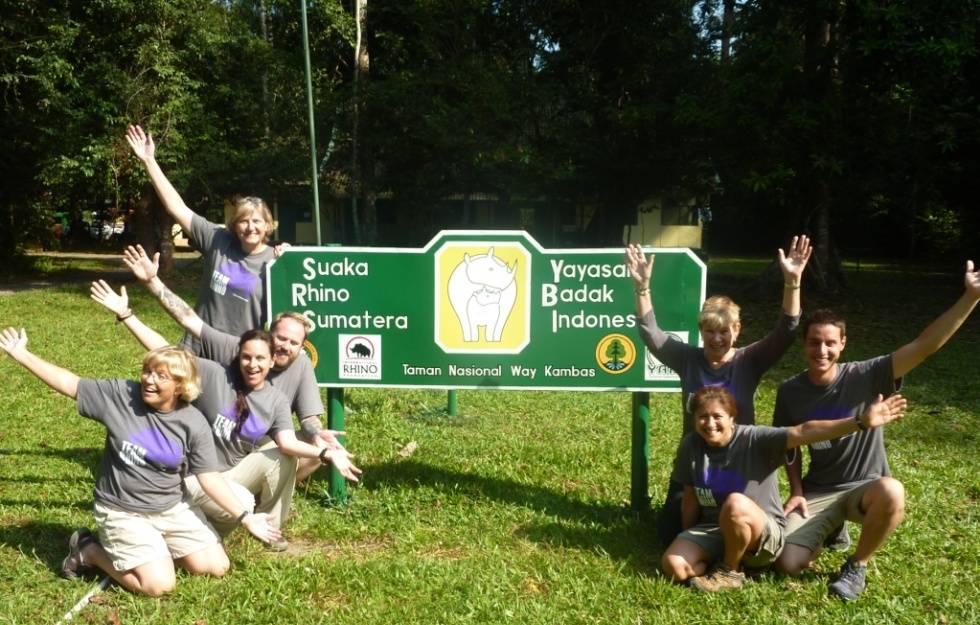
We arrived at Way Kambas where we heard a presentation from the RPUs. We then enjoyed trekking and a boat ride up the Way Kanan river. We also ate some great food prepared for us by the RPU and other SRS staff. It’s one of our best kept secrets that our RPUs are excellent cooks and they love to introduce the Bowlers to new foods.
The RPUs in Way Kambas work hard. Even though they are tasked with protecting the rhinos, their presence means that the other unique species in the forest are also being protected from harm. It’s a great benefit to the whole park to have the RPUs.
The Bowlers were able to visit the rhinos living in the SRS. At the sanctuary, the rhinos reside in large, open areas where they can experience a natural rain forest habitat while still receiving state-of- the-art veterinary care and nutrition. After having the opportunity to talk with the field teams and keepers at the SRS, we were able to see community livelihood agricultural plots that are supervised by the RPUs – including the biogas program.
We departed the SRS late morning and had lunch on our way to Bukit Barisan Selatan National. We arrived in the late afternoon for a presentation by the RPUs. The RPUs also made us a terrific dinner and hosted us overnight at the RPU’s “Camp 50” rainforest camp. The next day, after trekking with RPU into the BBS forest, we planted trees in the Bowlers’ Alley.
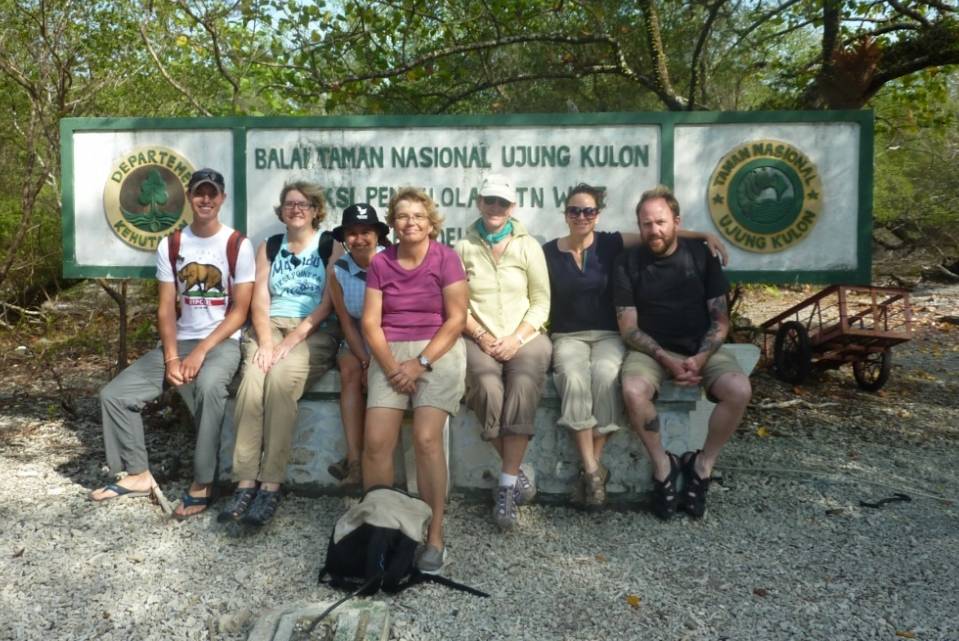
We headed to Ujung Kulon the next day and made our way to Handelum island for the night. Handeleum is a small island just off the northeastern coast of UKNP. The island boasts a great variety of forest, wildlife and wetlands in a very peaceful and beautiful location. The next day, we trekked to the Cigenter River with the RPUs, then spent several hours canoeing on the river in search of Javan rhinos.
It was after this trip that I realized that I have been helping with the BFR trip for a full decade! The best for everyone is always our time with the RPUs, but our time at the SRS and JRSCA are a close second and third.
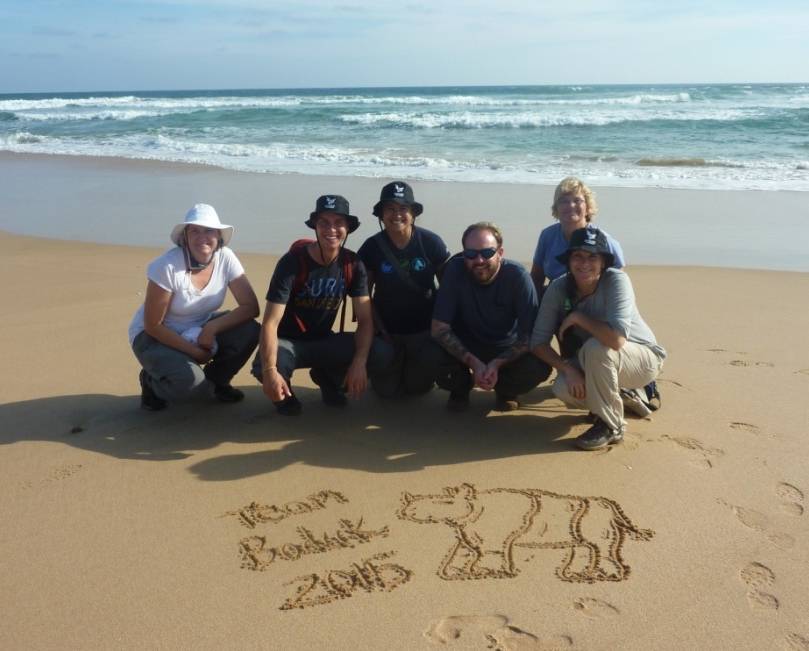
2016
In 2016, I was finishing my masters degree at the University of Queensland (UQ) Australia. This was the first time I couldn’t attend a Bowling for Rhinos trip and I was sad to miss it. However, the Bowlers’ trip still continued and was led by Bibhab Talukdar (IRF Asia Coordinator), Gloria Goeres (IRF Operation Manager) and M. Hanif (IRF Indonesia Liaison).
2018
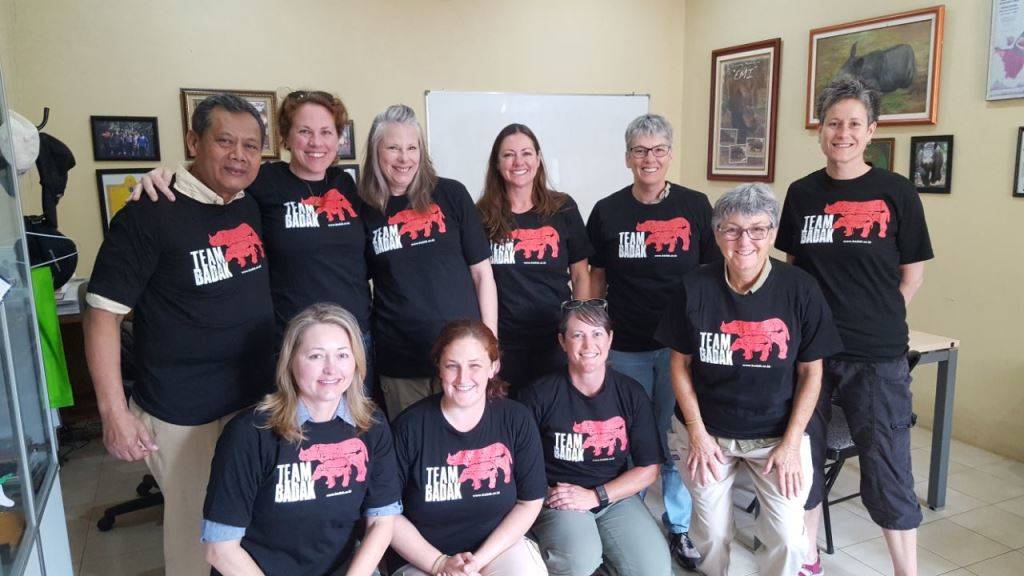
In 2018, we combined the winner bowling for rhino 2016 and 2017 and I am back again to lead this trip with CeCe Sieffert (IRF Deputy Director). The other participants were Kelly Russo (IRF Communication Manager), Toni Picollotti and Wanda Frazee (Jacksonville Zoo), Angela Leigh Snowie (Toronto Zoo Canada), Christine Maryann Bobko (Denver Zoo), Melissa Vindigni (North Carolina Zoo), and Charlie Jo Hyde and Mandi Alison Makie (San Diego Safari Park). At 10 people, this group was a little larger than past trips, but everyone seemed to have a really good time!
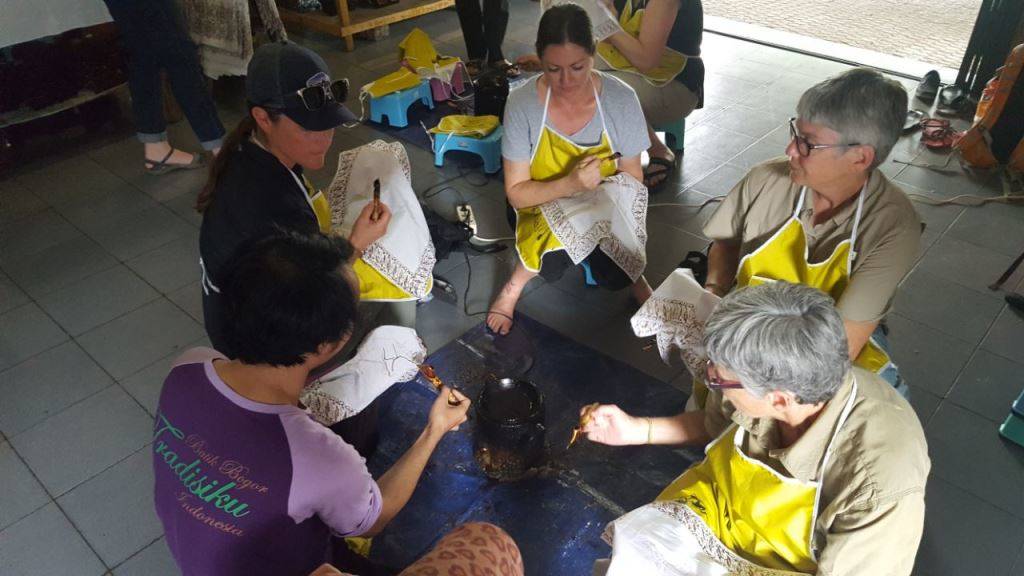
This Bowling for Rhinos trip to Indonesia took place in April/May, a little earlier than previous years. We started by visiting UKNP and then traveling to Bogor to visit YABI Headquarters. YABI stands for Yayasan Badak Indonesia, or the Rhino Foundation of Indonesia. YABI manages the RPU program and operations at the SRS. Also while in Bogor, the Bowlers learned how to make “Batik,” a traditional painted fabric from Indonesia.
We finished the trip with a quick flight to Sumatra to visit BBS and the SRS. All participants were very satisfied with the trip and we were able to show them what we have done to support rhino conservation programs in Indonesia. IRF and YABI very much appreciate the Bowlers’ contributions to preserve and protect the Sumatran and Javan rhino from extinction.
2019
The Bowling for Rhinos trip continues this year in July. This trip agenda is most like the trip that we did in 2009. The Bowlers spent a bit longer in Jakarta after arriving by visiting the National museum and exploring the city. Then we drove to UKNP, back to Jakarta, and flew to Lampung province to visit BBS and end up at the SRS. We did not get a chance to visit YABI headquarters in Bogor this year, but will make a point to add it to the agenda in the future. The participants of bowling for rhino this year are Kelly Russo (IRF Communication Manager) as a leader with me, Stacy Strother (IRF Communication Associate), Amy Marie Mathews and Kathleen Nicole Van Singel (Oklahoma Zoo), Jenna Christine Wingate and Scott Anthony Wingate (Cincinnati Zoo) and Ellen Wieczorek (Front Royal, Smithsonian). This trip was fun and interesting as usual and the Bowlers seemed really inspired by the RPUs. This trip was the last task for Kelly Russo as IRF staff after working with IRF for a long time.

In each one of these trips, I saw the impression that the RPU teams left on the Bowlers. The RPUs patrol and survey several thousand kilometers per year in each national park, both on foot and by boat, all the while monitoring rhino, tiger, elephant and tapir populations through direct sightings, footprints, feces, wallows, and evidence of feeding. The RPUs also gather evidence of illegal activities, including encroachment to build hunting camps and plant cash crops, setting snares for large and small mammals, laying traps for birds, illegal fishing, logging, the collection of non-timber forest products, and setting fires to burn off old vegetation and create fresh browse for game animals such as sambar deer. The Bowlers spend a very short amount of time with them, but always come away with a deeper understanding of what life is like for these real-life rhino heroes.
I can see that the Bowlers are honored to meet the RPUs and the RPUs really enjoy meeting the Bowlers. The Bowlers’ contributions and support are critically important and their gratitude is shown by the support provided for organizations like IRF. The Bowlers know their dollars go a long way in Indonesia and together, we are truly making a difference in rhino conservation.
I can’t wait to meet the next group of Bowlers, hopefully sooner than later, and show them how important their contributions to rhino conservation are.
Thank you so much to all the people that have made these trips so special for the past 15 years including AAZK, the Directors of the National Parks (Bukit Barisan Selatan, Way Kambas, and Ujung Kulon), YABI management, and especially to all my brother RPU members, SRS keepers, and JRSCA team that make these trips so special!!! Thanks so much, together we can do anything!!!
@ All pictures taken by Inov 2005-2019

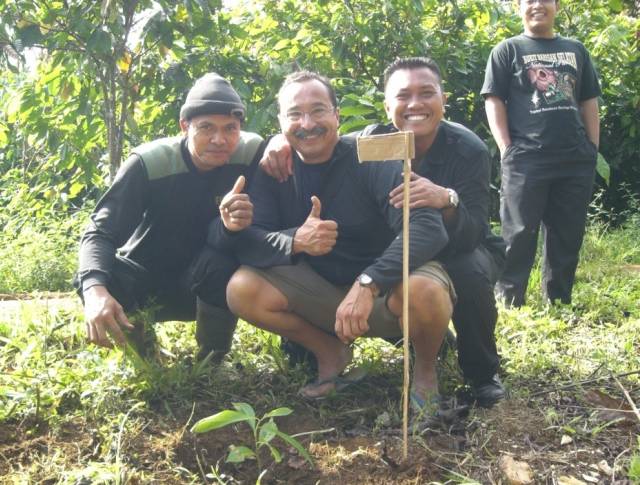
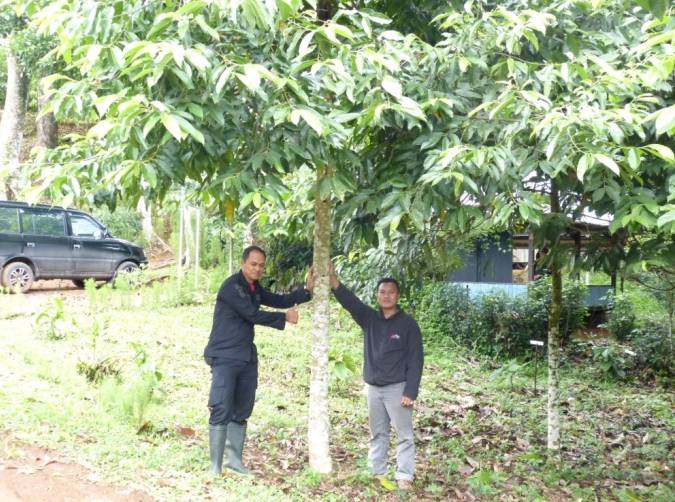
2 thoughts on “Celebrating 15 Years of ‘Bowling for Rhinos’ Indonesia Trips”
Does the game of bowling play any part in who gets to take the trip?
Good question! The bowling is really just an activity at the fundraising events, though some chapters do give prizes to winning teams, and there are often raffles and silent auctions involved as well. There are about 85 local AAZK chapters that host events, the National AAZK board selects the winning chapters based partly on who raised the most money and partly on a rotating raffle system. Once the winning chapters are determined, it is up to them to nominate the individual person who goes on the trip.